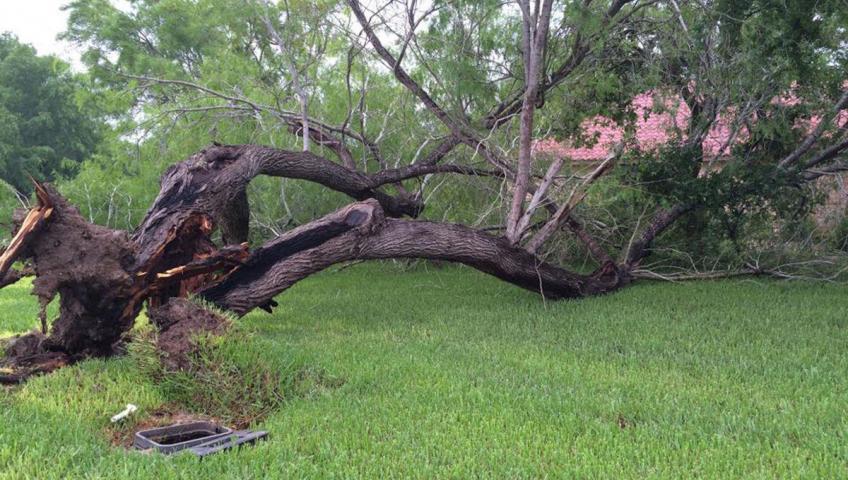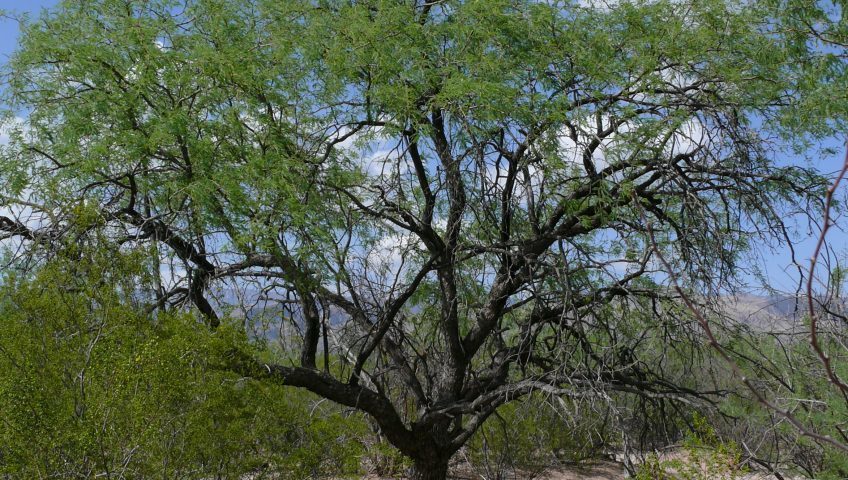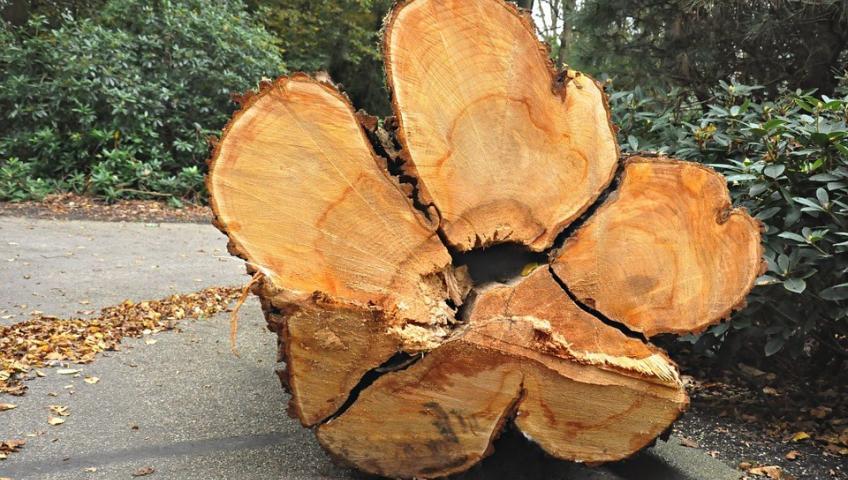
Preparing Arizona Trees For Monsoon Storms
Being an Arizona desert native, one familiar end of summer event is monsoon season. Usually, this season wills pan between mid-June throughout September. The monsoon storms exchange dry heat for high humidity, and they also create a large thunder and lightning display which may find spectacular. However, the downside to these storms are the number of trees that are badly damaged, at times causing property damages as well.
Monsoon is a term which originated from “mausim”, an Arabic word translating into “wind shift” or “season”. The meteorological events are literally a directional shift in the wind that causes the storms. Throughout winter in Arizona, wind direction blows in from Nevada and California. However, throughout summer, direction shifts, and wind comes from the Gulf of Mexico and the Pacific Ocean, which changes the dry heat out for plenty of moisture. Monsoon season provides Arizona with up to a third of the annual rainfall.
This shift in wind not only creates the three-month season of rain, it can cause violent thunderstorms, dust storms, and in some rare cases tornadoes. The “downbursts” are particularly damaging, which are powerful vortex rings that are characterized as a circle of air rotating vertically. At the downburst base there are outward bursts of heavy wind, close to the ground. Based on the overall duration and size, downbursts may be referred to as a “microburst” or “microburst”.
If you are looking for more detailed information regarding Arizona monsoon storms, it is recommended that you read the ASU School of Geographical Science’s article “Basics of the Arizona Monsoon & Desert Meteorology”.
In Arizona, the majority of storm damages that occur to trees happen from monsoon storms and their powerful winds. In addition, when it rains heavily prior to heavy winds, trees can become more vulnerable due to soil being extremely saturated. This causes the tree, even with strong roots, to have a weaker hold. In situations such as this, a large portion of a tree’s root system can be exposed if a tree falls. The truth is, even our best efforts is not always enough to prepare trees for withstanding the strong winds of a powerful monsoon storm. Although, there are many preparations that can be taken, and should for greatly reducing potential damage to trees during monsoon storms. The most important is to ensure your trees are not ignored or neglected. You should check on them on occasion!
It was stated by the Federal Emergency Management Agency (FEMA), a U.S. Department of Homeland Security branch that: “Three-fourths of tree damages occurring during storms can be predicted and prevented.”
Tree Vulnerabilities
Below is a list of defects that you can look for which cause trees to be more vulnerable to wind and various other weather severities:
Cracking – This is a direct indicator there is a high risk of branch failure occurring sooner than later.
Dead wood – Due to bring brittle, it is unable to withstand pressures compared to a living tree and becomes unpredictable.
Poor branch structure – This can be a challenging aspect to identify, even for a layman. Signs can include long horizontal limbs, excessive leaning, narrow crotches (V-shapes rather than U-shapes), and branches that cross and rub each other creating wounds. In addition, trees with multiple trunks require special attention and maintained care. When there are two trunks (or leaders), with the same diameter and they have a narrow crotch, these are negative factors. To help prevent damage or splitting, you need to choose one main trunk to be dominant. The other trunk will need to have growth stunted by subordination (pruning).
Decay – This can be caught by hallow cavities or fungal growth. These are clear signs of weakness.
Root Issues – These problems can be a bit tougher to spot, such as stem-girdling roots, but they have the highest impact towards the three’s inability to withstand weather conditions, even stand straight. Remember, the tree’s root system is what anchors it down. If a mature tree’s root system is significantly cut, crushed or damaged, or root-bound within the original box it was in from the nursery prior to planting, you might want to consider having the tree removed prior to it being damaged and/or removed by mother nature first, with no warning. A tree with a thick canopy and weak root system make for the deadliest combination when it comes to storms.
Pests – There are many pests that can weaken a tree, like the palo verde borer. These pests are able to exacerbate the health issues of a tree. However, they tend to target tree’s which are already weak and/or sick.
Viewing sky through canopy – One of the more important factors to maintaining a “stormproof” tree, is keeping it thinned. Basically, the thicker the tree, the heavier and more vulnerable it will be to heavy storm winds. This includes trees which are otherwise healthy as can be. Foliage that is overly dense creates potential safety hazards during strong windy weather. Not only is it heavier, a thick, dense canopy does not allow wind to travel through easily, creating resistance that can result in breaking branches, or being uprooted and falling over. The extra weight on branches only increase this possibility, which is the reason thinning is needed. You need to do more than clip the lower hanging branches, which can also cause a lion tail appearance.
For additional details and information regarding storm damages, check out the article “Causes and ‘Cures’ for Tree Storm Damages” by Steven Nix.
When using a Certified Arborist, you will get the best care for your trees. These are professionals that were certified by the International Society of Arboriculture (ISA). These experts have the required experience for recognizing potential hazardous defects quickly, prior to developing into major teaches for your trees. If these things are not taken care of, it can result in splitting, branch failure, even full loss of the tree. Remember, the care of your trees is not only the responsibility of the arborist, but yours. There are many things you’re able to handle.
Below are some basic tips that can help you avoid damage from storms:
- Fertilize, mulch and water trees properly and regularly to prevent soil compacting.
- When planting new trees, remember their size at maturity. Avoid planting trees too close to wires, buildings or other objects, on steep banks or ins hallow soil. Certain types of trees will be more brittle and susceptible to breakage. Prior to planting, research the tree and avoid issues later.
- Prune regularly. This is important, depending on the type of tree you have this could be needed annually, bi-annually or every three years. Trees may need pruning when young too. It is best to have a professional trim your trees to ensure proper structure and avoid issues.
- Avoid messing with soil around the roots. If excavation around roots is necessary, ensure to minimize cutting of roots or impairing them.
- Avoid topping trees. Although common, this practice should be avoided as it guarantees the branches will eventually fail.
Although storm intensity varies each monsoon season, Arizona residents can anticipate the arrival ahead of time to ensure protection is maximized. You should never wait until monsoon season is here to begin properly preparing trees for safety of your property, and family. You should always use proactive tree care practices, because money towards maintenance now can be much cheaper compared to unexpected damages from a falling tree. If the tree lands on buildings, fences, or cars the repair costs are even higher! Remember, paying for an ounce of prevention care is worth more than a pound of the cure. Typically, after trees have become damaged there is little that can be done to correct it.
A website of specialists in nova Scotia states: “When a tree is removed, it takes many years for regrowth. So many years, we may not see the tree mature during our life. Trees are our future investment.”
SOURCES: Eastwood, Steve. “Monsoon in Phoenix: What is the Arizona Monsoon?” http://www.About.com
Arizona State University: School of Geographical Sciences. “Basics of the Arizona Monsoon & Desert Meteorology”
“Prepare your Trees for Winter.” Seattle Department of Transportation: City Arborist’s Office: Urban Forestry
Nix, Steve. “Causes and “cures” for Tree Storm Damage.” http://www.About.com
“Simple Tips to Reduce High Wind, Tornado Damage.” www.FEMA.gov
“Storm-Proofing Trees.” Arbor Plant Health Care: Tree Pruning and Preservation Specialists.
Liberty Tree Care Offers Removal in Scottsdale, Mesa & Tempe
If you are searching for tree removal in Scottsdale, Mesa or Tempe, Liberty Tree Experts can help! Get a free tree removal quote by giving Liberty a call today at 480-482-9374.



